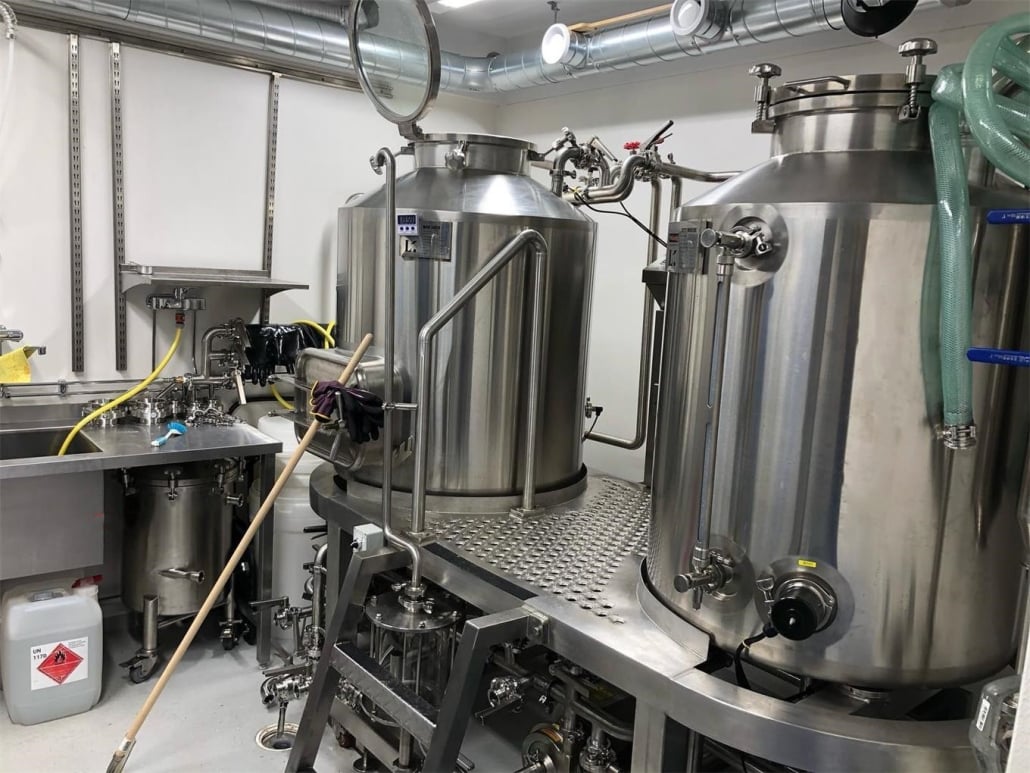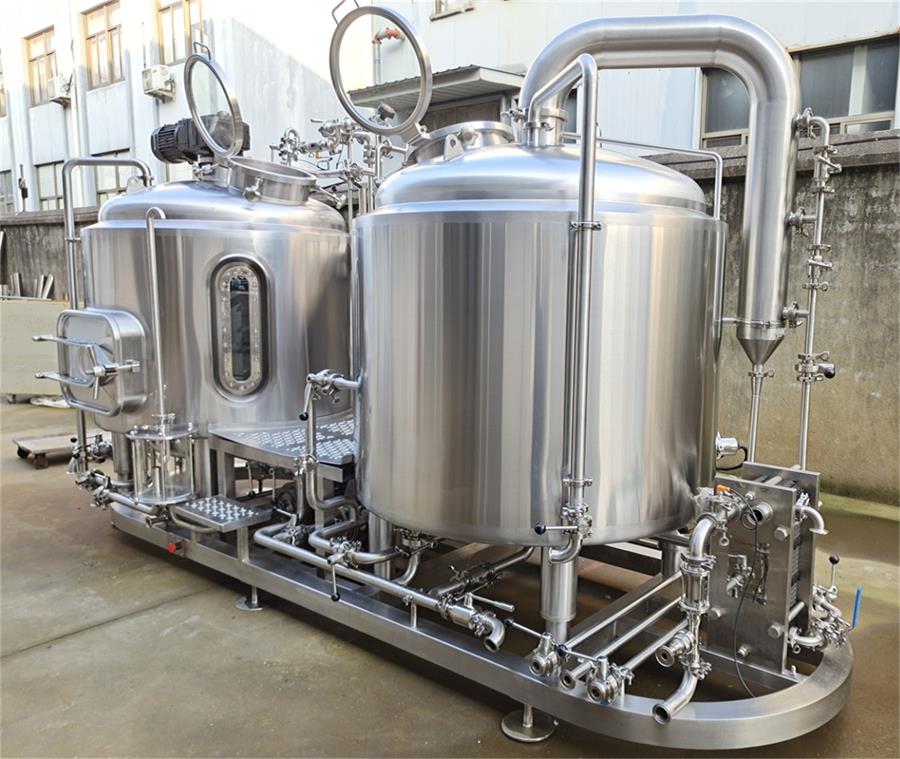Fermentation Brewery
Fermentation is the heart and soul of brewing. It’s where the magic happens—where simple ingredients like water, malt, hops, and yeast are transformed into the rich, flavorful beverages that have been enjoyed for centuries. Whether you’re an aspiring homebrewer or a seasoned professional, understanding the intricacies of a fermentation brewery is crucial to producing high-quality beer. This guide delves deep into every aspect of fermentation breweries, from the equipment needed to the brewing process, and how to choose the right supplier. Let’s dive in!
Overview of Fermentation Brewery
A fermentation brewery is where the brewing process’s crucial step—fermentation—takes place. Fermentation involves converting sugars into alcohol and carbon dioxide by yeast. This process defines the beer’s character, including its flavor, aroma, and alcohol content. The brewery setup, equipment, and process control play a significant role in the final product’s quality.
Key Components of a Fermentation Brewery
A fermentation brewery is a complex system comprising various components, each playing a vital role in the brewing process. The core elements include:
- Fermentation Vessels: These are tanks where the fermentation takes place. They come in various sizes and designs, depending on the brewery’s scale and the type of beer being produced.
- Yeast Management Systems: Yeast is a living organism that requires careful handling. Proper yeast management ensures consistent fermentation results.
- Cooling Systems: Temperature control is crucial during fermentation to prevent off-flavors and ensure the yeast performs optimally.
- Cleaning and Sanitizing Equipment: Maintaining cleanliness in the brewery is essential to avoid contamination, which can ruin entire batches of beer.

Present Equipment Guide for Fermentation Brewery
Overview of Fermentation Brewery Equipment
The equipment in a fermentation brewery is specifically designed to manage and optimize the fermentation process. Here’s a detailed overview of the essential equipment you’ll need:
Fermentation Vessels: These tanks hold the wort during fermentation. They are usually made of stainless steel and come in various shapes and sizes. The design of the vessel can influence the yeast’s activity and the beer’s final flavor.
Cooling Systems: These are used to maintain the ideal temperature during fermentation. This equipment includes glycol chillers and cooling jackets that wrap around the fermentation tanks.
Yeast Propagation and Storage Equipment: Yeast is often propagated in-house to ensure its health and consistency. Storage equipment includes yeast brink tanks, which hold the yeast before it’s pitched into the wort.
Cleaning Systems: Cleanliness is paramount in brewing. CIP (Clean-In-Place) systems allow for the thorough cleaning of tanks and piping without disassembling the equipment.
Detailed Table on Equipment Types
| Equipment Type | Description | Purpose | Considerations |
|---|---|---|---|
| Fermentation Vessels | Tanks made of stainless steel, various sizes | Hold wort during fermentation | Size, shape, cooling options |
| Yeast Propagation Tanks | Vessels for yeast growth | Ensure yeast health and quantity | Sterility, oxygenation systems |
| Glycol Chillers | Cooling system | Maintain fermentation temperature | Cooling capacity, energy efficiency |
| CIP Systems | Automated cleaning systems | Clean tanks and pipelines | Effectiveness, ease of use |
Present Brewing Process with Detailed Content
Understanding the Brewing Process
Brewing is a meticulous process that involves multiple steps, each requiring precision and attention to detail. The journey from grain to glass involves mashing, lautering, boiling, fermenting, conditioning, and packaging. But, within the context of a fermentation brewery, the focus is on the fermentation and conditioning phases.
Fermentation: After boiling, the wort is cooled and transferred to the fermentation vessel. Here, yeast is added (or pitched), and fermentation begins. The yeast consumes the sugars in the wort, producing alcohol and carbon dioxide. This process can take anywhere from a few days to several weeks, depending on the beer style and the desired flavor profile.
Conditioning: After primary fermentation, the beer is conditioned. This phase allows the flavors to mature and any unwanted compounds to settle out. Conditioning can occur in the same fermentation vessel or a separate tank, known as a conditioning or lagering tank.
Packaging: Once conditioned, the beer is ready for packaging. Depending on the brewery’s setup, this could mean bottling, canning, or kegging.
Detailed Table with Capacity, Spaces, Design, Layout, Customization
| Feature | Description | Options | Considerations |
|---|---|---|---|
| Capacity | The volume of beer that can be produced | Ranges from small (5 barrels) to large (100+ barrels) | Future growth, market demand |
| Spaces | The physical space required for equipment | Compact to expansive setups | Building size, workflow efficiency |
| Design | The layout of the brewery | Modular, linear, or circular designs | Ease of access, scalability |
| Customization | Tailoring equipment to specific needs | Custom-built tanks, unique shapes, integrated systems | Cost, specific brewing requirements |
Supplier Guide and Price Range for Fermentation Brewery Equipment
Overview of Choosing a Supplier
Selecting the right supplier for your fermentation brewery equipment is as crucial as the equipment itself. The supplier’s reliability, experience, and the quality of their products directly impact your brewery’s success. It’s essential to consider factors such as price, support, customization options, and the supplier’s reputation in the industry.
Detailed Table with Suppliers and Price Range
| Supplier Name | Location | Product Range | Price Range | Customization | Support |
|---|---|---|---|---|---|
| ABC Brewing Solutions | USA | Full range of brewing equipment | $$ – $$$ | High | Excellent |
| BrewTech Industries | Germany | Specializes in fermentation vessels | $$$ – $$$$ | Medium | Good |
| CraftBrew Equipment Co. | China | Affordable brewing systems | $ – $$ | Low | Fair |
| Premium Brewers Ltd. | UK | Custom fermentation tanks | $$$$ | High | Excellent |
Installation, Operation, and Maintenance of Fermentation Brewery
Understanding Installation and Operation
Installing a fermentation brewery is no small feat. It requires careful planning, professional installation, and thorough testing before you start brewing. The operation involves not just brewing but also managing the brewery’s environment—temperature control, cleanliness, and yeast health are just a few of the factors that need constant attention.
Installation: Installation typically involves setting up the tanks, connecting the cooling systems, and ensuring that the CIP systems are operational. Professional installation is recommended to avoid any issues that could compromise the brewing process.
Operation: Running a brewery involves monitoring every aspect of the brewing process. This includes maintaining the correct temperature during fermentation, ensuring the yeast is healthy and active, and keeping the brewery clean and sanitized to avoid contamination.
Maintenance: Regular maintenance is crucial to keep the brewery running smoothly. This includes routine cleaning, inspecting the tanks and pipes for any signs of wear or damage, and ensuring that the cooling systems are functioning correctly.
Detailed Table for Installation, Operation, Maintenance
| Aspect | Details | Requirements | Considerations |
|---|---|---|---|
| Installation | Setting up equipment, connecting systems | Professional installation services | Space, power, water supply |
| Operation | Day-to-day running of the brewery | Skilled personnel, monitoring systems | Training, automation |
| Maintenance | Regular cleaning, inspections, repairs | CIP systems, spare parts | Downtime, cost of parts |
How to Choose the Right Supplier for Your Fermentation Brewery
Factors to Consider When Choosing a Supplier
Choosing the right supplier for your fermentation brewery equipment can be daunting. Here’s a breakdown of what to look for:
- Experience: A supplier with a long track record in the industry is more likely to offer reliable products and support.
- Quality of Equipment: The quality of the materials and the craftsmanship of the equipment will affect the longevity and efficiency of your brewery.
- Customization Options: Depending on your brewing needs, you may require customized equipment. Some suppliers offer extensive customization options, while others provide standard equipment.
- Price: While price is always a consideration, it’s essential to balance cost with quality. Cheaper equipment might save money upfront but could lead to more significant expenses down the line due to repairs or inefficiency.
- Support and Service: A good supplier offers ongoing support, including installation help, troubleshooting, and access to spare parts.
Detailed Table on Choosing a Supplier
| Criteria | Importance | Details | Questions to Ask |
|---|---|---|---|
| Experience | High | Proven track record in the industry | How long have they been in business? |
| Quality | High | Material and build quality | What materials are used? |
| Customization | Medium | Ability to tailor equipment to needs | Do they offer custom designs? |
| Price | Medium | Cost vs. value | Are there hidden costs? |
| Support | High | Ongoing service and spare parts | What support is available post-purchase? |
Comparing the Pros and Cons of Fermentation Brewery Equipment
Advantages and Limitations of Different Equipment Types
Choosing the right fermentation brewery equipment involves weighing the pros and cons of various options. Here’s a comparison of different types of equipment to help you make an informed decision.
Detailed Table Comparing Pros and Cons
| Equipment Type | Advantages | Limitations | Best For |
|---|---|---|---|
| Standard Fermentation Vessels | Affordable, widely available | Limited customization | Small to medium breweries |
| Custom Fermentation Vessels | Tailored to specific needs | Higher cost, longer lead time | Specialty breweries |
| Yeast Propagation Systems | Ensures yeast health and consistency | Requires additional space | Breweries focusing on consistent quality |
| Glycol Cooling Systems | Efficient temperature control | Higher upfront cost | Breweries in warm climates |
Share this entry
Interested in learning more about Brewing Systems including additional details and pricing information? Please use the form below to contact us!
YOLONG BREWERY EQUIPMENT FAQS
- Commercial Brewery / Craft Brewery / Microbrewery / Nanobrewery
- What is The Difference Between Craft Beer and Industrial Beer?
- The Bespoke Differences In Custom Brewing Systems
- Everything You Need to Know About Kettle Souring
- How to Choose Brewing Equipment for Your business?
- How To Choose The-Best Partner To Build Your Commercial Microbrewing System?
- Two Detection Sensors That You Need To Use In Your Brewhouse System
- Remote Control Applications in Brewing Equipment/How does it work?
- How To Clean Your Brand New Brewery Tanks?

